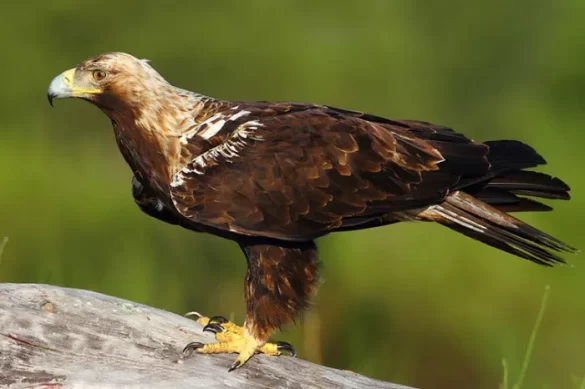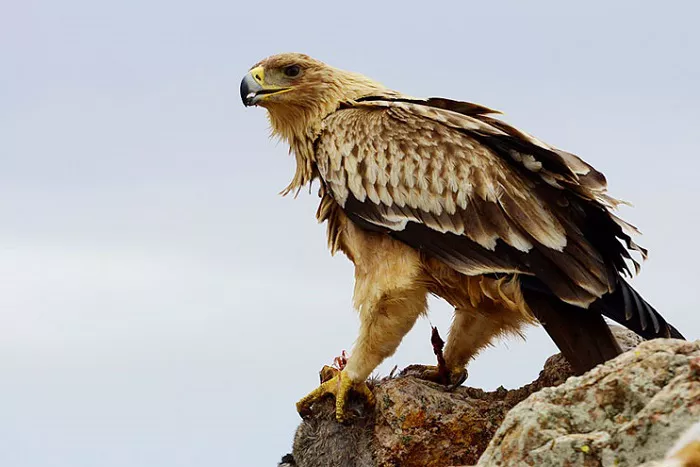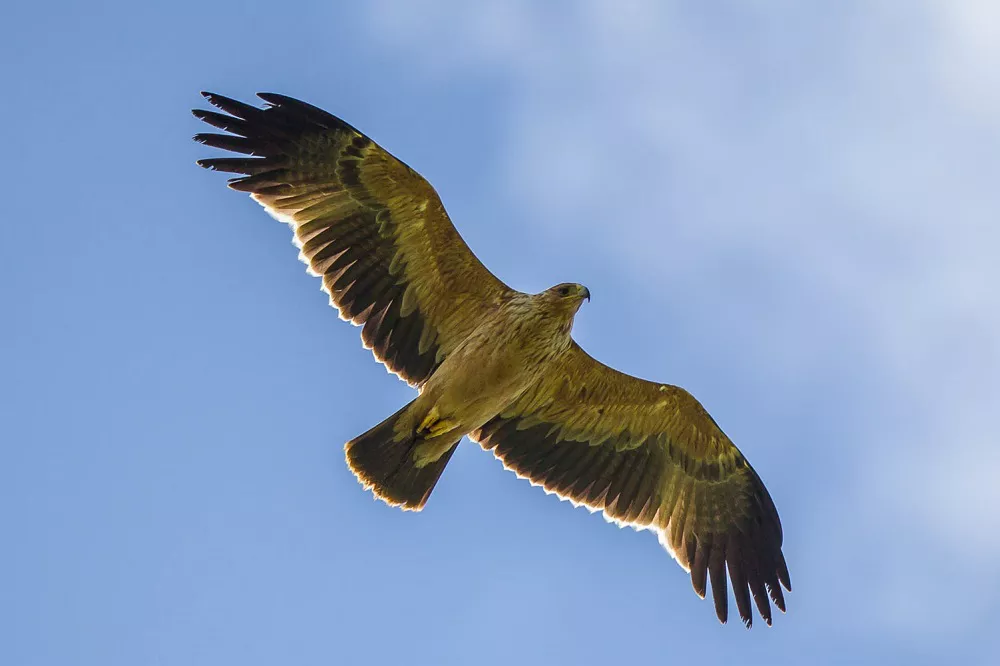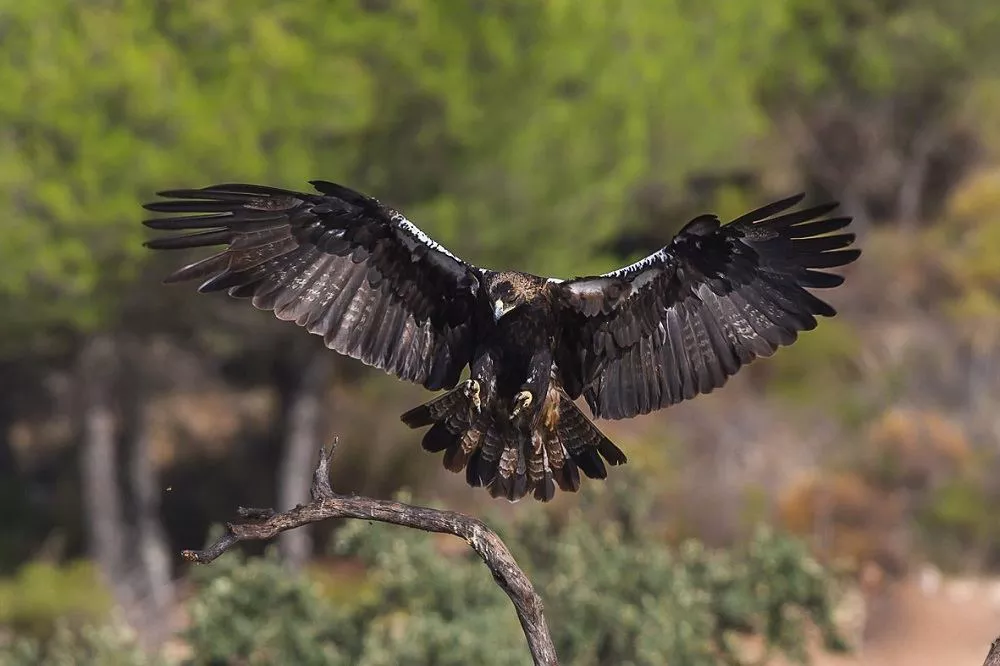Spain is a country full of natural beauty, culture, and history. From its warm Mediterranean coasts to its rugged mountains and green forests, Spain is home to many different types of animals. Among them, one bird stands out: the Spanish imperial eagle. This bird is known as the national bird of Spain. It is a symbol of strength, pride, and natural heritage.
In this article, we will learn all about the Spanish imperial eagle. We will explore where it lives, what it eats, how it behaves, and why it is so important.
What Is the Spanish Imperial Eagle?
The Spanish imperial eagle (Aquila adalberti) is a large bird of prey. It is also called the Iberian imperial eagle. This bird is one of the rarest eagles in the world. It is found mainly in Spain, with some small populations in Portugal. It is a close relative of the eastern imperial eagle, but it is a separate species.
The Spanish imperial eagle is easy to recognize. Adults have dark brown feathers with white markings on their shoulders. They have a pale yellow beak and piercing eyes. Young eagles look different; they are lighter in color and turn darker as they grow older.
| Feature | Details |
| Scientific Name | Aquila adalberti |
| Common Name | Spanish Imperial Eagle / Iberian Imperial Eagle |
| Size | 75 – 85cm in Body Length |
| Wingspan | 180–210cm (5.9–6.9 ft) |
| Weight | 2.5 – 4.5kg |
| Habitat | Woodlands, open plains, and scrub areas in Spain and a few parts of Portugal |
| Diet | Mainly rabbits; also birds, reptiles, and amphibians |
| National Symbol | Yes, the national bird of Spanish |
| Lifespan | Up to 30 years in the wild |
| Conservation Status | Vulnerable (IUCN Red List) |
Where Does the Spanish Imperial Eagle Live?
This eagle prefers open woodland areas. It likes places with a mix of trees and open land, such as forests near farmlands or scrublands. The bird builds large nests high up in trees where it can watch its surroundings and stay safe.
The main habitats of the Spanish imperial eagle are:
- Central and southwestern Spain
- Some parts of western Portugal
Some of the best-known regions for eagle sightings include Sierra de Guadarrama, Coto Doñana National Park, and the Extremadura region. These areas have a good amount of food and safe places for nesting.
What Does the Spanish Imperial Eagle Eat?
Like other birds of prey, the Spanish imperial eagle is a carnivore. This means it eats other animals. Its main food source is rabbits. Rabbits are common in many parts of Spain, and the eagle depends on them for survival.
When rabbit numbers go down, the eagle may eat other small animals. These include:
- Birds such as pigeons and crows
- Small mammals like squirrels and rodents
- Reptiles and amphibians
The eagle hunts by flying high and watching for movement on the ground. Once it spots a target, it swoops down quickly to catch it.
Why Is the Spanish Imperial Eagle Important?
The Spanish imperial eagle is not just any bird. It is important for several reasons:
1. It is a symbol of Spain.
The eagle represents strength, freedom, and natural beauty. As the national bird, it is part of Spain’s identity.
2. It shows the health of the environment.
Eagles live at the top of the food chain. When they are healthy and have enough food, it means the ecosystem is doing well.
3. It is rare and needs protection.
There are only about 600 breeding pairs in the wild. This makes it a vulnerable species. Protecting the eagle helps protect many other animals and plants too.
Conservation Efforts
For many years, the Spanish imperial eagle was considered one of the world’s rarest eagles. In the 1970s, fewer than 50 pairs were left in the wild. Thanks to intense conservation efforts, the population has grown, but it is still considered a vulnerable species. The main threats included:
- Loss of habitat due to farming and building
- Poisoning from pesticides and traps
- Collisions with power lines
- Fewer rabbits because of disease
Thankfully, things have improved. Many organizations, including the Spanish government and nature groups, have worked hard to save the eagle. Some of the efforts include:
Thankfully, things have improved. Many organizations, including the Spanish government and nature groups, have worked hard to save the eagle. Some of the efforts include:
- Creating protected areas and national parks
- Placing safe power lines and poles
- Breeding programs to help young eagles grow and survive
- Educating people about wildlife protection
These actions have helped increase the eagle population. By the early 2020s, there were over 500 pairs living in the wild—a huge success compared to decades ago. However, the eagle is still vulnerable, so these preservation efforts must continue.
See Also: The National Bird of Italy: The Italian Sparrow
The Role of the Spanish Imperial Eagle in Spanish Culture
Birds have always fascinated people, and the Spanish imperial eagle is part of the country’s heart and heritage.
Historical Significance
Symbols in Art and Flags: Eagles have been used for centuries in crests, flags, and royal symbols, representing strength, power, and freedom.
Royal Connections: The eagle features in some Spanish royal emblems, linking it to the history of Spanish kings and queens.
Popular Culture: In stories, legends, and folk tales, the eagle appears as a symbol of bravery and nobility.
Modern Awareness
Today, the eagle is used as a symbol in nature reserves, wildlife protection campaigns, and ecological education across Spain. Images of the bird inspire pride among Spaniards.
Interesting Facts about the Spanish Imperial Eagle
Here are some fun and interesting facts about the Spanish imperial eagle:
1. The Spanish imperial eagle is one of only a few eagle species that are endemic to Europe.
2. They can soar high up to 1,000 meters (3,280 feet) while looking for food.
3. Each eagle has a unique call, used especially during the mating season.
4. The oldest Spanish imperial eagle known in the wild lived more than 30 years.
5. Eagles mate for life, returning to the same area and often the same nest each year.
6. Each eagle pair usually raises one or two chicks per year.
Conclusion
The Spanish imperial eagle is more than just a bird. It is a rare and beautiful creature that plays an important role in nature and culture. As Spain’s national bird, it reminds us of the need to protect the natural world.
Frequently Asked Questions (FAQs)
Q1. What is the national animal of Spain?
The national animal of Spain is the bull (toro in Spanish). The bull has deep cultural significance in Spanish history, art, and traditions, particularly in relation to bullfighting and festivals like the Running of the Bulls in Pamplona.
Q2. What is the national sport of Spain?
The national sport of Spain is football (soccer). Spain has one of the most competitive football leagues in the world (La Liga), and the national team has won major international tournaments, including the FIFA World Cup in 2010 and the UEFA European Championship in 1964, 2008, 2012, and 2024.
Q3. What is the national flower of Spain?
The national flower of Spain is the red carnation (clavel rojo). It symbolizes deep love and affection and is often used in traditional celebrations and festivals throughout the country.
Q4. What is the national tree of Spain?
The national tree of Spain is the holm oak (Quercus ilex), also known as the evergreen oak. It is native to the Mediterranean region and plays an important ecological role in Spain’s landscape, especially in the dehesa (a traditional Spanish agroforestry system).





 Facebook
Facebook  Instagram
Instagram  Youtube
Youtube 